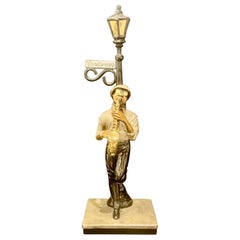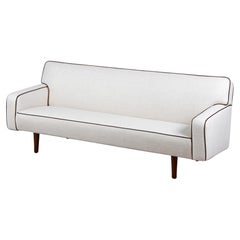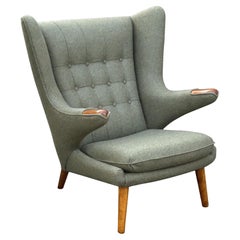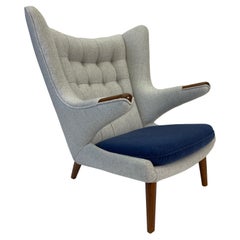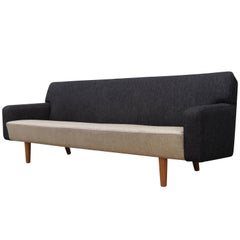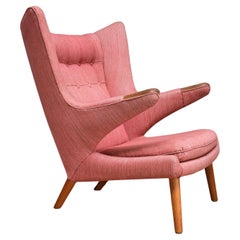P Wegner
1990s American Figurative Sculptures
Bronze
Vintage 1950s Danish Mid-Century Modern Sofas
Linen, Leather, Oak
Vintage 1960s Danish Mid-Century Modern Chairs
Bouclé
Vintage 1950s Danish Scandinavian Modern Sofas
Upholstery, Wool, Oak
Mid-20th Century Danish Scandinavian Modern Lounge Chairs
Wool, Oak, Teak
Vintage 1950s Danish Scandinavian Modern Lounge Chairs
Oak, Teak, Wool
Mid-20th Century Danish Scandinavian Modern Stools
Fabric, Teak
Vintage 1950s Danish Scandinavian Modern Sofas
Oak, Upholstery
Vintage 1960s Danish Scandinavian Modern Armchairs
Fabric, Wool, Upholstery, Beech, Oak
Vintage 1950s Danish Scandinavian Modern Sofas
Oak, Upholstery
Vintage 1950s Danish Scandinavian Modern Benches
Leather, Oak
Vintage 1960s Danish Scandinavian Modern Lounge Chairs
Textile, Oak
Vintage 1950s Danish Scandinavian Modern Sofas
Wool, Upholstery, Oak
Mid-20th Century Danish Scandinavian Modern Stools
Fabric, Teak
Vintage 1950s Danish Mid-Century Modern Sofas
Fabric, Wood
Vintage 1960s Danish Modern Lounge Chairs
Steel
Vintage 1950s Danish Scandinavian Modern Slipper Chairs
Steel
Vintage 1950s Lounge Chairs
Oak
Vintage 1950s Danish Scandinavian Modern Lounge Chairs
Wool, Oak, Teak
Vintage 1950s Lounge Chairs
Teak
Vintage 1950s Danish Mid-Century Modern Lounge Chairs
Leather, Oak, Teak
Vintage 1950s Danish Scandinavian Modern Sofas
Steel
Vintage 1950s Danish Mid-Century Modern Lounge Chairs
Leather
Vintage 1950s Danish Mid-Century Modern Stools
Leather, Teak
Vintage 1960s Danish Scandinavian Modern Lounge Chairs
Leather, Oak
Vintage 1950s Danish Scandinavian Modern Dining Room Chairs
Steel
Mid-20th Century Danish Lounge Chairs
Fabric, Oak, Teak
Vintage 1950s Danish Mid-Century Modern Lounge Chairs
Teak, Leather
Vintage 1950s Danish Modern Lounge Chairs
Oak, Teak, Leather
Vintage 1950s Danish Scandinavian Modern Lounge Chairs
Leather, Oak, Teak
Vintage 1950s Danish Scandinavian Modern Side Chairs
Steel
Vintage 1950s Danish Scandinavian Modern Lounge Chairs
Leather, Teak
Vintage 1950s Danish Scandinavian Modern Lounge Chairs
Fabric, Teak
Vintage 1960s Danish Mid-Century Modern Lounge Chairs
Iron
Vintage 1960s Danish Modern Dining Room Chairs
Steel
Vintage 1960s Mid-Century Modern Furniture
Teak
Vintage 1950s Danish Scandinavian Modern Lounge Chairs
Steel
Vintage 1950s Danish Scandinavian Modern Lounge Chairs
Steel
Vintage 1950s Danish Mid-Century Modern Armchairs
Teak
Vintage 1970s Danish Scandinavian Modern Lounge Chairs
Chrome
Vintage 1970s Danish Scandinavian Modern Desks and Writing Tables
Oak
Mid-20th Century Scandinavian Scandinavian Modern Serving Tables
Oak
Vintage 1950s Danish Scandinavian Modern Sofas
Upholstery, Oak
Vintage 1950s Danish Scandinavian Modern Sofas
Fabric
Mid-20th Century Danish Mid-Century Modern Lounge Chairs
Leather, Rope, Oak
Mid-20th Century Lounge Chairs
Teak
1990s Danish Mid-Century Modern Sofa Tables
Oak
Mid-20th Century Danish Mid-Century Modern Armchairs
Wool, Teak
Vintage 1950s Danish Scandinavian Modern Stools
Leather, Oak
Vintage 1960s Danish Scandinavian Modern Chairs
Leather
Vintage 1950s Danish Scandinavian Modern Tables
Teak
Vintage 1960s Mid-Century Modern Benches
Wool, Teak
Vintage 1950s Danish Scandinavian Modern Stools
Leather, Oak
Mid-20th Century Danish Mid-Century Modern Lounge Chairs
Teak
Vintage 1950s Danish Scandinavian Modern Lounge Chairs
Fabric, Wool, Rosewood
20th Century Danish Ottomans and Poufs
Wood
20th Century Danish Stools
Leather
Mid-20th Century Danish Scandinavian Modern Lounge Chairs
Steel
- 1
P Wegner For Sale on 1stDibs
How Much is a P Wegner?
Finding the Right Seating for You
With entire areas of our homes reserved for “sitting rooms,” the value of quality antique and vintage seating cannot be overstated.
Fortunately, the design of side chairs, armchairs and other lounge furniture — since what were, quite literally, the early perches of our ancestors — has evolved considerably.
Among the earliest standard seating furniture were stools. Egyptian stools, for example, designed for one person with no seat back, were x-shaped and typically folded to be tucked away. These rudimentary chairs informed the design of Greek and Roman stools, all of which were a long way from Sori Yanagi's Butterfly stool or Alvar Aalto's Stool 60. In the 18th century and earlier, seats with backs and armrests were largely reserved for high nobility.
The seating of today is more inclusive but the style and placement of chairs can still make a statement. Antique desk chairs and armchairs designed in the style of Louis XV, which eventually included painted furniture and were often made of rare woods, feature prominently curved legs as well as Chinese themes and varied ornaments. Much like the thrones of fairy tales and the regency, elegant lounges crafted in the Louis XV style convey wealth and prestige. In the kitchen, the dining chair placed at the head of the table is typically reserved for the head of the household or a revered guest.
Of course, with luxurious vintage or antique furnishings, every chair can seem like the best seat in the house. Whether your preference is stretching out on a plush sofa, such as the Serpentine, designed by Vladimir Kagan, or cozying up in a vintage wingback chair, there is likely to be a comfy classic or contemporary gem for you on 1stDibs.
With respect to the latest obsessions in design, cane seating has been cropping up everywhere, from sleek armchairs to lounge chairs, while bouclé fabric, a staple of modern furniture design, can be seen in mid-century modern, Scandinavian modern and Hollywood Regency furniture styles.
Admirers of the sophisticated craftsmanship and dark woods frequently associated with mid-century modern seating can find timeless furnishings in our expansive collection of lounge chairs, dining chairs and other items — whether they’re vintage editions or alluring official reproductions of iconic designs from the likes of Hans Wegner or from Charles and Ray Eames. Shop our inventory of Egg chairs, designed in 1958 by Arne Jacobsen, the Florence Knoll lounge chair and more.
No matter your style, the collection of unique chairs, sofas and other seating on 1stDibs is surely worthy of a standing ovation.
Read More
The 21 Most Popular Mid-Century Modern Chairs
You know the designs, now get the stories about how they came to be.
Design Icon Ilse Crawford on Her Colorful New Hans Wegner Chairs
If anyone is brave, humble and adept enough to recolor these mid-century masterpieces, it’s Ilse Crawford. Here, she gives us the details on her five earthy paint choices and tells us how she feels about design collaborations.
Hans Wegner’s Wishbone Chair Still Feels Fresh, 70 Years after Its Debut
To celebrate the Wishbone’s 70th anniversary, Carl Hansen & Søn’s third-generation CEO, Knud Erik Hansen, shares some of the secrets behind the beloved chair.
113 Chairs That Prove Danish Design Isn’t Limited to Denmark
In an innovative display, the Designmuseum Danmark is permanently exhibiting the 20th century's most iconic seats.
